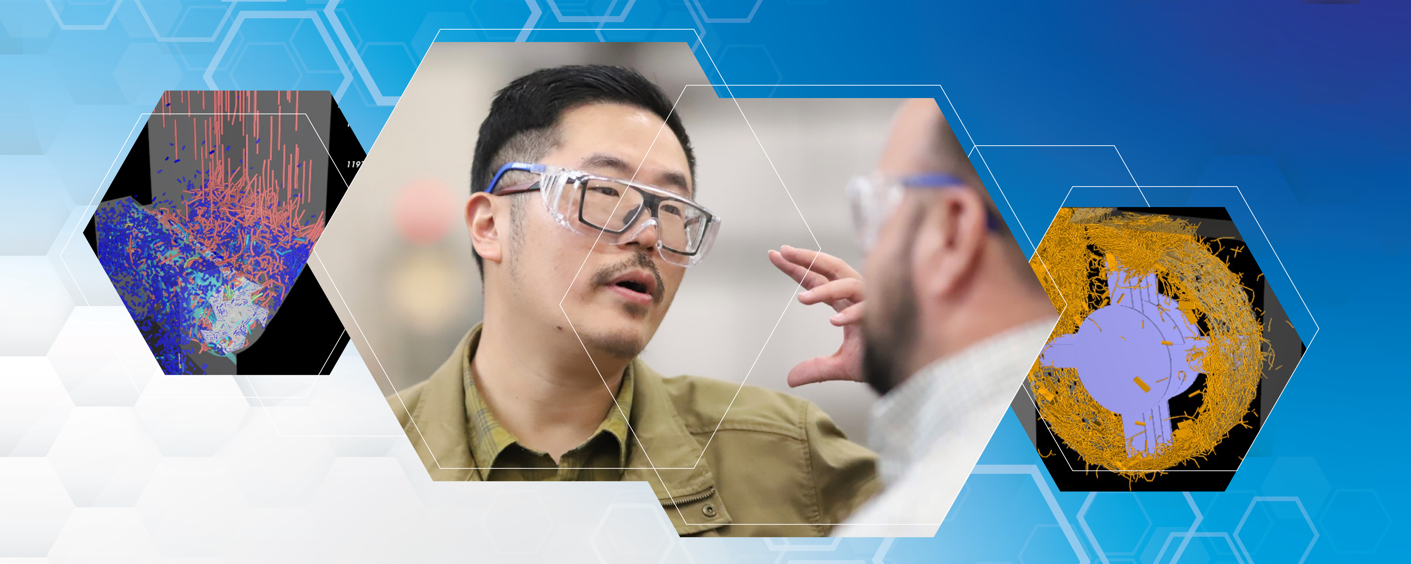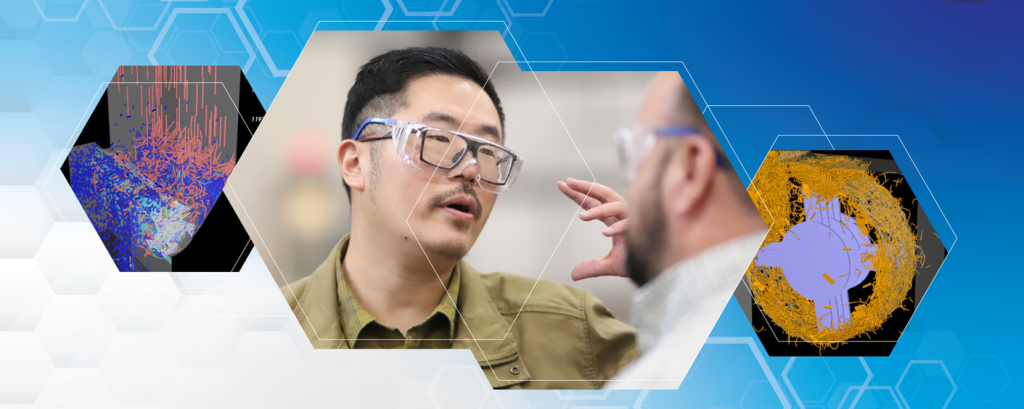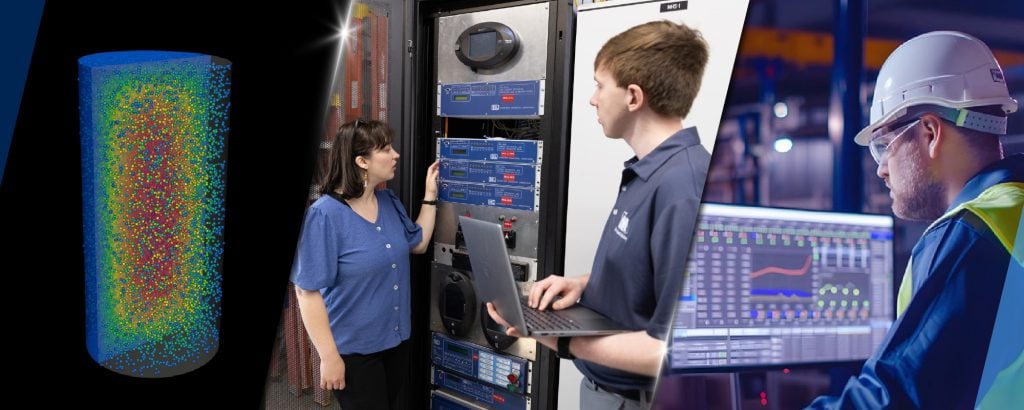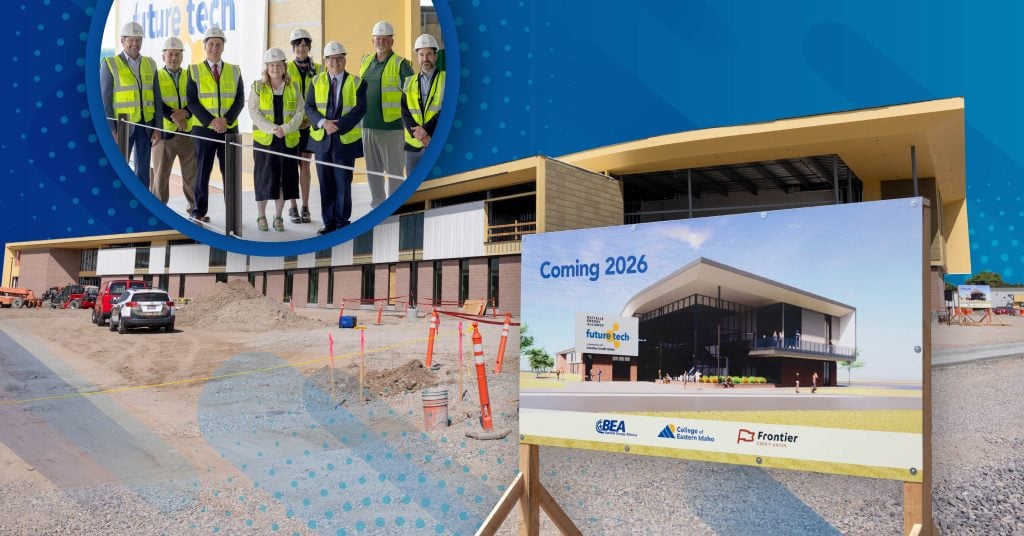Turning materials like wood chips, crop residues and municipal solid waste into fuels and chemicals is important for our country’s energy independence.
Over the past two decades, the U.S. Department of Energy Bioenergy Technologies Office (BETO) laid out ambitious goals for processing these biomass resources into useful, affordable industrial fuels and feedstocks.
However, figuring out how to make small pieces of biomass flow easily through machinery during processing remains a challenge. When machines get clogged, it leads to delays and increased costs. While grinding, milling and pelletizing have been done for decades with food, minerals and pharmaceuticals, there has been little research into how technologies and processes can be adapted to handle plant materials and municipal solid waste. Now, researchers at the Idaho National Laboratory (INL) have developed computer models that apply to processing bioenergy crops using equipment from those other industries.
BETO funded the project through the Feedstock-Conversion Interface Consortium. With the help of advanced computer programs, bioenergy researchers can now make better predictions by looking at lots of complex data and finding patterns.
“It helps engineers design better milling approaches that are more energy efficient and effective,” said Yidong Xia, senior research scientist in INL’s Physical Process Science and Realization group. In three journal articles, Xia and his colleagues detailed how existing and emerging computational tools can be used to solve challenges related to feedstock particle size, distribution and thermochemical conversion.
Focus on corn stover
The INL team processed corn stover, which is the stalks, leaves, husks and cobs left over after corn is harvested. Researchers used special cutting techniques to turn corn stover into material that can be processed evenly. Unlike rocks and powders, which can be milled into relative uniformity because of their density and rigidity, the material properties of individual biomass particles have complicated internal and surface structures. Inside industrial-scale biomass silos and screw conveyors, there can be millions of particles with a wide range of geometries and properties.
Located in the U.S. Department of Energy’s Biomass Feedstock National User Facility, INL’s Process Development Unit (PDU) lets researchers and industry partners test grinding, drying, pelletizing and other mechanical and chemical separation options during the design and scale-up of bioenergy facilities.
“Our purpose is to share our expertise and facilities to help our industry partners better understand the complex interactions that go on at industrial scales,” said Damon Hartley, a senior bioenergy research scientist. “This provides simplified and actionable information that can be utilized to improve operational performance.”
Faster estimates for guiding physical operations
Their April 2022 paper in Biosystems Engineering detailed the elastoplastic flexural behavior known as elastoplasticity of corn stalks. Elastoplasticity describes how a material that is both elastic (returns to its original shape) and plastic (permanently deforms) bends under a load. A December 2023 follow-up paper in Biosystems Engineering detailed how discrete element method modeling revealed that while stalk length had little influence on particle size, larger cross sections generated larger milled particles. From there, Xia’s team conducted biomass size reduction experiments with the PDU’s knife mill. The study published in May 2024 in Powder Technology shows how using advanced computer models can help predict and recommend the best settings for equipment to reduce the size of particles.
The experiments provided insight into how fast estimates of particle size distribution can be used to guide physical operations. A model’s accuracy depends on the quality of the source data from physical testing. The more source data there is, the more reliable the model.
“First, we measure the cornstalks’ biomechanical properties,” Xia said. “Then we mill the material in the PDU to generate reference data as the basis to create a (discrete element method) simulation. From there, we can verify the data for use in fast predictive machine learning models.”
Assessing the data
Researchers found that the speed and power of the knife mill had minimal impact. Instead, the discharge screen size and moisture content played much more significant roles. With data in hand, the INL team developed a more comprehensive mathematical framework for predicting the evolution of particle size by adding moisture as a new input. Likewise, the deep neural operator model they developed allowed for influencing factors such as moisture content. Both models proved to be “remarkably accurate” in calibrating and defining training parameters.
“Large-scale physical testing is expensive and is a common challenge for scale-up engineering,” Xia said. “The more data we have ahead of time, and the more detail we have, the better our results are likely to be when we finally engage in large-scale testing.”
It’s a win-win for industry and BETO.
“Our industry partners have the expertise, but they might not be able to afford the sophisticated hardware and software tools needed to conduct this kind of research,” Xia said. “This is what national laboratories do. We’re here to help them optimize their processes and procedures, to help them be more successful. With the work we do, we hope to attract their interest and have them recognize our capabilities.”





